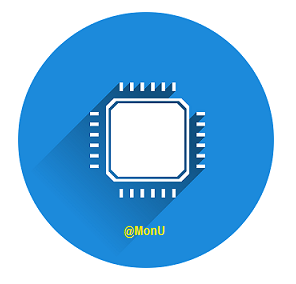pH
Contents:
- Introduction
- Define PH?
- What is PH?
- How is PH measured?
- Methods to determine Acidity/Basicity
- How to calculate PH
- Define the PH Scale?
- Acid solution and Basic Solution
- Strength of pH Scale (with example)
- Uses of PH
- Conclusion
Introduction
We all know lemon is sour. The taste is refreshing to the human palate and often work wonders in lifting fatigue from a daily workout or even stress of working daily. There is such a charm for human’s tongue that find acidic thing appealing as we even produce artificial flavor with simple chemistry. Yes, the sourness of lemon came from a chemical named citric acid and it is measured using pH value.
Having mentioned that, pH value is not an absolute unit. The process of determining pH value has so many variables and constants to it. Temperature also played a role in other chemical processes and can affect the outcome of our measurement.
What is the definition of pH?
In chemistry terms, pH (Potential of Hydrogen) can be defined as the measure of how acidic or basic a water-based solution is. In hindsight, pH cannot be measured in oil or alcohol-based solution because pH only counts the number of hydrogen ion activity in water. Thus, pH is a measure of this activity in a solution using logarithmic reciprocal.
There is, however a method for calculating pH (Potential of Hydrogen) value for the compound that is soluble in another solution such as oil and other chemicals. These are usually classified and calculated using the Lewis acid-base model that is not dependent on hydrogen ion activity in a solution, but we will not touch on that subject matter yet.
The basic formula for calculating pH value is –log10c where c is defined as the number of moles or concentration of hydrogen ion per liter. For the meaning of pH itself, there are several discussions about the original definition. The first person to coin the term pH is a Danish chemist by the name of Søren Peder Lauritz Sørensen. He never explains the term specifically but uses it in measure of potential differences in hydrogen ions.
What is pH?
As we stated previously, pH (Potential of Hydrogen) is counted in the logarithm of the reciprocal of hydrogen ion activity in water. It scales (measure) in decimal (.) value. Specifically, it counts the number of free hydrogen and hydroxyl ion in a water-based solution.
Since the number is measured using the reciprocal of the logarithm, a difference in 1 value resulted in the big gap between the two values. For example, in a solution with a pH value of 3, the solution with a pH value of 2 has 10 times more concentration of hydrogen ion per mol per liter than a solution with a pH value of 3.
How is pH measured?
Basically, the higher the count of free hydrogen ion in your solution, the more acidic it becomes and more hydroxyl ion leads to a more basic solution. By measuring the concentration of these ions, we can determine the pH value of a solution.
To measure pH, there are several ways to determine the value. One method is to use an electrochemical measuring system in which the hydrogen activity in solution is detected by using electrodes and millivoltmeter, then calculated based on the buffer solution of known pH value.
There is also a universal indicator, similar to litmus paper but more accurate as the change in color can be observed since it is a mixture of indicators that can change color for pH (Potential of Hydrogen) ranging from pH 2 to pH 10. The further result can be traced with a spectrophotometer which can accurately detect the color changes.
What are the Methods to determine acidity/basicity?
The most basic test to determine an acidic or basic base is to use litmus paper. It is the most basic chemistry lab test done in school by dipping the paper strip into the solution and watching the reaction (color change) of the litmus paper. The standard result is when the blue litmus paper turns into the red is acidic and red litmus paper turns into the blue is alkaline (basic).
As this is the most basic test, it is not always accurate as different factors can affect the outcome. For example, in the case of a very weak acid, there may not be enough color change if any due to the low concentration of hydrogen ion to interact with the litmus paper. As mentioned before also, temperature plays a role in the activation of hydrogen ion. At 0-degree Celsius pure water has a pH value of 7.47 and 6.14 at 100-degree Celsius. Thus, pH value is always measured at room temperature as a standard reference to pure water.
How to calculate pH?
To calculate the value of the pH (Potential of Hydrogen) of a solution, knowledge of mathematical calculation is needed. The formula is as follows: pH = -log10(aH+) = log10(1/aH+)
where a is the number of mol per liter and H+ is hydrogen ion.
Let us take an example of hydrochloric acid, HCl with a concentration of 3 x 10-4 mol per liter. Therefore, using our formula will yield pH = –log10(3x10-4) which results in 3.52 in the value of pH.
However, do note that this calculation applies to strong acid and base, in which they are completely integrated with water. For weak acid and base, the calculation will involve something called acid dissociation constants. The value of these constants for weak acid and base has been largely determined through experiments, where the RICE chart is used to keep track of the changes in equilibrium.
Basically, the chart shows how much changes in composition when a reagent reacts with water, and thus the constants and pH value can be calculated. Do note, however, that the acid or base is not very weak and the concentration is not too dilute as to neglect the concentration of OH- ions.
What is the definition of pH Scale?
pH (Potential of Hydrogen) scale ranged from 1 to 14, with a lower number means higher acidity and a higher number means more basic a solution is. Pure water at room temperature or 25-degree Celsius has a pH value of 7, in which it is defined as neutral, a solution that is not acidic nor basic in nature. Hence, pure water can be a buffer for the pH test.
Another buffer that can be used is a known pH value solution beforehand, usually a strong acid or base solution. This way, we can determine in what range our tested solution is in and gain more accurate results.
The scale of pH range is not absolute as there exist superacid and superbase which fall outside the usual pH range of 0 to 14. There is a proposal to unified all the pH values for other types of a solution by using a model called Lewis acid-base definition that proposes the common proton reference standard.
Acid solution and Basic solution
As we previously mentioned before, lower pH (Potential of Hydrogen) value means more acidic a solution is and vice versa. Basically, an acidic solution contains free hydrogen ion while basic solution contains hydroxyl ion. Usually, the chemical formula for acid starts with [H] as seen with hydrochloric acid or HCl, while basic solution or alkaline base usually ended with [OH] as seen with sodium hydroxide or NaOH. There is also a statement that pushes acidity as sour-tasting in mouth and basic solution as bitter and slimy. However, this is not a safe method to be tested on random acid and alkaline solution.
Acid and base solutions are corrosive in nature, though they depend on the strength of the solution itself. Corrosive in this context means it can react with substances and tissues, damaging them in the process. Hence, the acid and basic solution are to be handled with care especially strong acid and basic solution.
Strength of pH Scale (with example)
Continuing with our topic, usually pH scale is ranging from 1 to 14. Strong acid and alkaline will be categorized as being able to completely dissolves in water. This is because water itself is such a weak acid albeit having a minuscule effect. However, there is some compound that can be called superacid and superbase that has pH value outside of the normal range. These compounds are usually made in the lab and do not occur naturally. The reason for such deviation exists outside the normal range is because pH (Potential of Hydrogen) value itself is dimensionless since the scale is logarithmic in nature.
Let us take a look at everyday objects and chemicals to get a figure on how the scale works. Starting with the chemical we are all familiar with, the car battery. It is a simple chemical process that supplies energy in form of electricity due to the potential difference between two solutions. Chemicals used inside are just water and sulfuric acid. Sulfuric acid is represented by chemical formula H2SO4 and has a pH value of 0. Moving on we have our lemon juice or citric acid, C6H8O7 at pH value around 2. A pure black coffee has a pH value of 5, whereas seawater is basic with a pH value of 8. Standard baking powder will have a pH value of 9.5, while your strong drain cleaner will have the highest pH value of 14.
What are the Uses of pH?
The value of pH certainly played a big role in our life even if humanity never discovered it. There are certain theories that life could be different or do not exist at all if the Earth in its early stage does not have the right pH value in its ocean. Similarly, the human body is regulated to be around a pH of 7.4 at all times, slightly basic. Deviating from this value will present harm to the body.
The value of pH is also needed for agriculture purposes. Good soil is considered to be ranging from 6.5 to 7.5 in pH value. The water that comes to our house is maintained to be ranging from 6.5 to 8.5 of the pH value.
We often hear in news about river or ocean pollution, but little if ever is mentioned about pH value in those news flash. However, there is no doubt pH value plays an important role in our ecosystem. For example, thanks to seawater being slightly alkaline in nature, they help the current ocean’s carbon cycle. Thus, with evidence of carbon dioxide emissions helped in the ocean becoming more acidic, it is not known how big the impact will be, although some simulation suggested undesirable results from this process.
The use of Potential of Hydrogen (pH) is really important across many industries such as agriculture, industrial processes, treatment of waste-water, and any more. The pH value shows us the chemical conditions of a solution and is an important quantity for it. It can control the behavior of chemicals, biological functions, the nutrients availability, and microbial activity as well.
Conclusion
Based on our discussion above, we find out that pH is integral in our life. While it is a complex subject to dive into, it is also an interesting one to learn more about. For example, a different part of human bodies has different pH values. This range of value is maintained through a process called acid-base homeostasis in which they are tightly regulated. Hence, disturbing this balance by consuming too much acid or base in food can result in many problems to the body itself.
Without a doubt, pH is an important topic that is closer to us than what we think at first and should not be undermined with any other subjects. By studying the various chemical processes involved in nature such as how our body regulates its pH value, we are one step closer to unravel the mysteries of life.












































